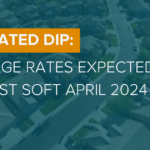An Overview Of The Connecticut Real Estate Market
Connecticut received a large influx of new wealthy residents coming from New York City and other cramped metro areas throughout the neighboring states, contributing to the real estate boom and bringing upwards of millions of dollars in purchasing power. While the average home in the area doesn’t need that much money, it has benefited sellers by having buyers offer above asking price and sometimes bring cash to the table. With a population of 3.5 million, not including the rapid growth that occurred over the last year, there’s plenty of people looking to either purchase homes or rent property.
For the fix and flip investors- there were approximately 449 flips during 2020 with an average revenue of $98,950. Across the state sales of single-family homes were up 21% in Q1 of 2021 while condominium sales rose by 33%. Currently, inventory is scarce compared to 2020, but the moratorium on evictions is supposed to end on June 30th which will start to slowly lead to an inventory increase for the rest of 2021. These stats bode well for investors looking to fix and flip in Connecticut, if they can prepare for the tough competition when evictions begin.
Building permits for single-family homes rose to a 5-year-high for the state with 1,971 permits being issued throughout 2020. Due to supply cost increases and delays on construction materials, multi-family permits were slightly down from the previous year, but not from lack of demand or lack of quality builders in the area. For real estate investors looking at new construction opportunities, Connecticut needs single-family homes as they can’t be built fast enough to keep up with the market demand. To put it in perspective, the state has 16% less inventory than the previous year with 18% higher average sale prices.
Owners of rental property have also benefited over the last year, as the housing shortage has caused more demand for quality rentals, which has driven up the average rental price throughout Connecticut. Fairfield County alone has seen a 45% drop in available rental units from the previous year while average rental prices rose by 44%, with the rest of the state experiencing similar trends with less drastic number differences. For buy and hold investors that are looking for profitable rental property, using the BRRRR strategy in Connecticut could be a great investment plan.
Each state was impacted differently throughout the health crisis, leading to a record-breaking loss of jobs and economic downturn. While each state is recovering, some are recovering faster than others, and Connecticut is one of them. According to Connecticut’s Economic Digest, the state has already recovered 59% of jobs lost since April 2020, which is slightly outpacing the country recovery rate of 58%. Business, health, and construction sectors are growing across the state with expected employment growth of 13.5% up through Q2 2022. This means well-paid and in-demand jobs are being created in the economy and will continue to drive up housing prices for the area. Understanding the market conditions for the area you want to invest in will help you plan your investment strategy and maximize your returns.
Now, let’s focus on the best places to invest in Connecticut real estate.
Bridgeport
Formerly an overlooked real estate market, Bridgeport has become one of the centerpieces for New England real estate investors. As one of the largest cities in Connecticut with a population of 145,000, it’s been trickling upward since 2016 as people around the tristate area began looking for more affordable alternatives to places like New York City. It’s also home to the only zoo in Connecticut- a minor selling point in the grand scheme but much more appealing to growing families looking for their starter home. With the nearby towns of Fairfield and Trumbull being more affluent and expensive areas, it makes Bridgeport even more attractive and attainable for real estate investors looking for distressed properties to flip or new homes to build.
Pre-pandemic the area had a soft market for both sales and rentals. Sales are currently red hot for the city, with fix and flips and new construction flourishing. While rentals aren’t necessarily exploding in the current market, it’s much better than it used to be with a healthy vacancy rate and gradually climbing average rental prices.
As of May 2021, the average home sale prices for the area reached $279,000 which is a 23% increase year over year. Homes are spending an average of 60 days on market, with 137 homes selling throughout the month. This indicates a healthy seller’s market, since days on market is in the sweet spot between 45-90 days. The most common trait you’ll see is that inventory is scarce, with only 135 properties on the market including single-family and condos/townhomes, which is a 28% drop in available inventory from the previous year.
The most common traits in homes sold for the area are home office, finished basement, and pool. These traits give an idea of the kind of home buyers in the area: working middle-class families that are looking for a permanent residence to grow and comfortably work-from-home. By adjusting your flip or construction plans to involve amenities such as this, you can ensure that your investment is sold quickly and at a premium price for the area.
Fairfield
Fairfield is one of the wealthier towns in Connecticut, with nearly double the average household income of the United States average. The largest job sectors in the town are financial services, scientific services, and health care, which explains the higher individual incomes and especially the higher price points for homes in the area. With a population of 62,000 that is made up mostly of married couples or long-term couples planning on marriage, Fairfield is a top tier city for fix and flips and new construction projects. Since much of the purchasing power from home buyers in this town comes from these young couples looking for permanent residences, it’s a great opportunity for investors to provide them quality starter homes aimed at a wealthier crowd.
The average home sale price for the area reached $490,000, which is a 20% year over year increase. 1,318 homes sold during the month of April 2021, with homes spending an average of 38 days on market, indicating a very hot seller’s market. What’s more important to note is that this level of growth was starting before the global health crisis, so while these price surges are certainly inflated based on the current demand and low inventory, its not like the prices are expected to fall significantly in the coming years. In fact, experts believe all of Fairfield County will remain a hot spot for real estate for quite some time, which should excite real estate investors that know how to find the right opportunity.
As mentioned earlier in the article, the Fairfield rental market is the strongest it’s been in years. Only 24% of the population rents instead of owns, but the market has seen rising demand (and therefore rising rent prices) due to the lack of available housing inventory. Currently the vacancy rate is less than 7%, which is on par with the national average and indicates a healthy rental market. One-bedrooms are renting for an average of $1,800, which is a 29% increase from the previous year and highlights where the negotiating power currently lies. Since home ownership is lagged for many people due to inventory shortages, the need for reliable rental property is strong, making Fairfield Connecticut a great choice for investors practicing the BRRRR strategy.
Milford
Situated on the eastern border of the state and part of Connecticut’s coastal community, Milford has become an excellent area for both new construction and rental property. The town is a little smaller than Fairfield with a population of 55,000 and a little less wealthy, although still with a much higher average household income than the national average. Plus, the sales tax is lower than the national average, boosting the potential spending power for residents in the area and helping to drive up the average home prices.
The average home sale price for the area reached $371,000 which is a 20% increase year over year. Typical homes are spending an average of 46 days on the market, with hot homes selling in 20 days on average. Nearly all the homes sold in Milford are being sold for above the initial listing price, ranging from 2% more to 7% more, which is indicative of the level of market demand as well as the purchasing power that Milford residents hold.
New construction boomed in Milford during 2020 and continues to grow rapidly up through 2021, delayed only by the occasional lumber shortages and supply transportation issues. During 2020 there was a stretch of five months in a row where the new single-family homes being built reached over 400 per month, which is a record for the area. The first 8 months of 2020 saw an 11% increase in new housing permits, with residential new construction hitting a 5-year-high for the town. Any time there is such critically low levels of inventory, experienced builders and developers can take advantage of hard money loans for new construction and reap the benefits of the inventory gap.
The most popular home trends in homes being sold quickly and above asking price include home office, outdoor pool, and finished basement. Like other areas around Connecticut, most of the home buyers are young families looking for their first primary residence and need the space to both work from home and grow their family in a relaxing environment. Making sure to understand the market’s demands and adjusting your flip or build accordingly will help you ensure the maximum profit when final sale comes around.
Stratford
Stratford sits in the middle of southern Connecticut along the “Gold Coast” of the Long Island Sound. The town currently has a population of 52,000 and has grown 3% over the last 10 years. For comparison, Connecticut has only seen a 1% growth over the last 10 years, making Stratford one of the fastest growing cities in the entire state. Economically, the town exists alongside many of the national averages, including job growth and home appreciation. That said, the average household income in Stratford is well above the national average, and that high-end buying power is the kind of opportunity real estate investors love to see. As of May 2021, the average home prices in Stratford reached $325,000, which marks a 23% increase year over year. 54 homes sold during the month and typical homes are spending an average of 49 days on market. The very hot homes are selling on average for 6% above asking price and from listing day to final sale is taking only 24 days. Inventory for the area is continuing to drop rapidly month to month since new construction can’t keep up with the demand. From May to June there was an 85% drop in home resale inventory, indicating that builders who can acquire land could fill a much-needed gap in available inventory. As for the rental market in Stratford- only 21% of the city rents versus owns, which is well below the state’s average renter population. That said, the limited rental availability has driven monthly rent prices up. Currently one-bedroom apartments are renting for an average of $1,400 per month, which is an 8% increase from the previous year. Additionally, the current rental vacancy rate is 6.9% which is below the national average and indicative of a healthy rental market. Even though a smaller percent of the population rents, having access to this niche market with a desirable property can produce serious gains over time for Connecticut buy & hold investors.
Waterbury
Waterbury occasionally gets a bad rep from the locals- mismanagement from the city officials coupled with higher taxes than neighboring cities has left a sour taste in some residents’ mouths. That said, as a real estate investor, Waterbury is a great location for both fix and flips as well as long-term rental property. Waterbury is one of the biggest cities in Connecticut, boasting a population of over 107,000, and has a consistently healthy working economy with a large stable population, making investing in the area a safe choice. Most of the jobs are centered around retail trade, manufacturing, and education with a healthy predicted job growth rate of 22%. This blue-collar work force represents lower buying power than some of the wealthier Connecticut towns, but that’s part of Waterbury’s strength for investors. This is a primary residence or primary rental type of city, so the need for reliable inventory isn’t a passing interest. While there’s a slightly higher unemployment rate than the national average, the entire state is on a rapid road to economic recovery, so this number should be dropping significantly within the following year. As of May 2021, the average home price is $188,000 which is a 31% increase from the previous year. Homes are spending an average of 50 days on market, which is indicative of a healthy and stable real estate market. Especially desirable homes can sell up to 7% above listing price and can go as quickly as 13 days from listing date to final sale. More importantly, 116 homes sold throughout the month which is an impressive 60% increase year over year and highlights the large increased activity that Connecticut markets like Waterbury are seeing. The most common home traits for homes that are selling quickly and above asking price include- you guessed it- home office, finished basement, and outdoor pool. These trends exist for a reason and should be considered by any real estate investor interested in these markets. Investments are about maximizing your profits, and the best way to maximize profit is to have a product that buyers are willing to pay premium price for.
Litchfield
Litchfield is one of the smaller towns on the list, with a population of only 8,000 people. However, it’s a powerful investment area thanks to the purchasing power of its residents and the economic growth that the town is seeing. Most of the jobs in the area center around construction, finance, and manufacturing, dictating an upper-middle class economy with more average buying power than a city like Waterbury. The unemployment rate and job growth rate are practically on par with the national average, making Litchfield a healthy and safe investment. Where it shines above average is its average income per household, which is much higher than the national average. As of May 2021, the average home sale price for the town reached $580,000, marking a 38% increase from the previous year and a 5-year high for the town. 17 homes sold during the month, which is a 32% decrease from the previous year and atypical for many of the towns on this list. However, given the low population, activity in this town will fluctuate more than others and therefore number changes in either direction will seem more dramatic than they are. Homes are spending an average of 61 days on the market, which is 32% less time than homes were on market the previous year. The rental market isn’t spectacular in either direction- it’s extremely average, and that can be a great thing for risk-averse investors. The average rent for a one-bedroom apartment is $1,200 and has seen almost zero growth or decline in the last two years, fluctuating between a few percentage points difference at the very most. If you’re an investor looking for stability and finding a property that will appreciate while paying for itself with this level of stagnant rent, then Litchfield could be a good option for you. Many of the new residents to Litchfield were coming from parts of New York City such as Brooklyn and consisted of many young to middle-aged parents that needed the space and Wi-Fi strength for a full family to use Zoom calls. Given that was the type of buyer looking at homes in Litchfield, the most common traits amongst desirable homes were home office, finished basement, and large master bedroom. Focusing your Litchfield real estate investment efforts onto these three parts of the home will help maximize interest from potential buyers and have them offering above asking price compared to homes lacking in these areas.
Norfolk
Norfolk is a perfect example of the Connecticut real estate markets that boomed due to people leaving New York City and other nearby crowded cities. It’s a small town with a population of only 1,628, which means this won’t become an investment mecca, but the population saw a growth of 16% over the last year, which is unheard of. The average household income is far above the national average, as many older wealthy Connecticut residents enjoy their privacy in this tucked-away town.
More impressive than the population rise is the average price for homes in the town. As of May 2020, the average home price for Norfolk reached $415,000, which is a staggering 1085% increase from the previous year! That kind of rapid growth can only occur with a perfect storm of influence- the pandemic forcing people to purchase a home they could feel comfortable being at all day, inventory in the state reaching critical lows, and an affluent population that can afford to flex their wallet and drive the numbers up.
There will always be outliers like this during real estate booms, which is why investors need to keep their finger on the pulse of economic and residential shifts to predict and capitalize on these growth spurts. In our previous report that looked at Florida, we saw that average home prices in Ocala jumped up 22133.3%. Places like Ocala and Norfolk are obviously unusual, but it highlights the importance of being ahead of the curve through market research and understanding the potential of upcoming shifts.
Final Thoughts
Connecticut has transformed from an underwater real estate market that no one wanted to touch, to one of the best performing markets for real estate investors in the northeast. While the health crisis definitely gave Connecticut a surge to its markets, this growth phase was starting as early as three years ago, so this doesn’t seem to be a flash in the pan that will come crashing down next year. People have realized the value of Connecticut real estate, and investors are looking to seize the opportunities. By keeping track of market trends and understanding the reason behind demand growth, savvy investors can take advantage of these market conditions and walk away with lucrative deals.
As always, Asset Based Lending is ready to finance your next real estate investment in Connecticut. Whether you’re looking to fix and flip in Bridgeport or want to begin your rental portfolio in Fairfield, our team can tailor a loan that matches your specific project. We continue to offer the fastest and most reliable hard money loans for real estate investments, including the only true zero-point program in the industry. If you’re looking for a hard money loan in Connecticut, give us a call at 201-942-9089 or email us at info@abl1.net.







0 Comments